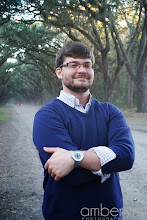The end of World War One was a glorious time. While there are several endings to the war (the armistice being one in 1918, and the treaty of Sassoon begins the poem with everyone starting to sing. It is a great image, especially when Sassoon likens the delight that it brings him to the freedom that “prisoned birds must find” (2). At the end of the poem, Sassoon says that “Everyone / Was a bird,” so when the reader looks at the poem as a whole, different parts take on another context (9-10). The prison that these birds were contained in was the war. They were stuck there, fighting, losing each other and dieing. Once this war ended, however, they were released like birds that have been kept in a small holding cell. The imagery is magnificent. The joy expressed by these soldier and their families and the people of the countries they were fighting for are exuberant. The same energy expressed when a bird flies from a cage is put into the sound of this very song. The birds fly “on—on—and out of sight,” never to look back on war again (5). When the poem was written, no one wanted to head to war again. Sassoon wrote of the glorious end to World War I in hopes that there would never be another. The last line states that “the singing will never be done,” but sadly, barely two decades pass before their song is interrupted (10). Sassoon makes more allusions to the final end of the war throughout the poem. “Everyone’s voice was suddenly lifted,” he says” [a]nd beauty came like the setting sun” (6-7). When the sun sets, it is a beautiful event. Sassoon compares the sun setting to the end of the war. They are both beautiful things. The voices that he hears, the voices of joy and delight, bring so much beauty. Such a beautiful sight that his “heart was shaken with tears,” and even “horror / [d]rifted away” (8-9). Everything is at peace now. The war has ended, and the sunset is beautiful. The song they are singing will go on forever. This poem serves a very hopeful image of the future as well. Sassoon has seen the horrors of this war and knows that no one would want to do that again.
Monday, June 29, 2009
And I – Am Watching as the Birds Go Flying Home: Siegfried Sassoon Sings
Posted by Corbin Parker at 11:33 AM
Subscribe to:
Post Comments (Atom)

1 comments:
Corbin,
Congratulations on completing your 20th blog post!
Good discussion of Sassoon's poem in this final post, with effective presentation of and commentary on the phrases you quote. Good job overall in your perceptive (and creatively titled) blog!
Post a Comment